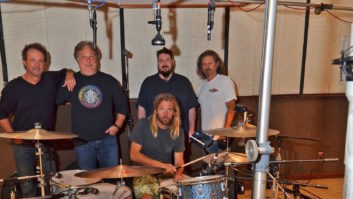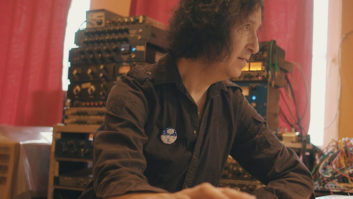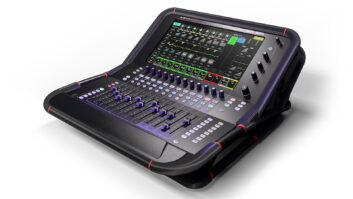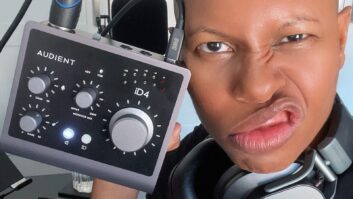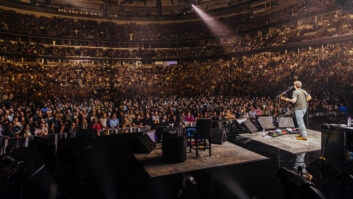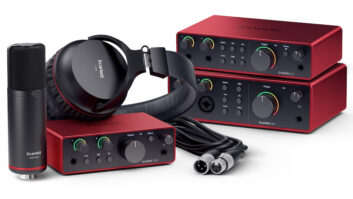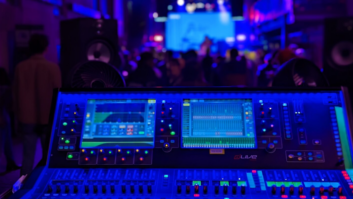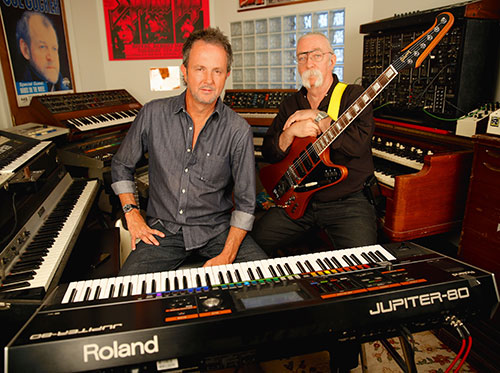
For the past 40 years, Jeff “Skunk” Baxter has been too busy to record his own album because he’s either been part of Steely Dan or the Doobie Brothers, recording with the likes of Donna Summer, Joni Mitchell, Ringo Starr, Sheryl Crow, Dolly Parton and Rod Stewart, touring with James Brown, Elton John and Linda Ronstadt, producing records for Nazareth, Nils Lofgren and the Ventures, or working as a consultant to the U.S. Department of Defense.
But Baxter has finally taken the time to express himself on his yet-unnamed first solo record, created with longtime friend and musical collaborator CJ Vanston.
For any guitar player, Baxter’s album is a requirement. For any music lover, ditto. But the sheer guitar art that he displays within the 12 songs is a journey that covers, for example, a homage to his Scottish roots with a scorching guitar lead in “Ladies From Hell,” the trading of dueling gritty solos with Jonny Lang on “I Can Do Without,” soul personified as he matches his guitar delivery with Michael McDonald’s vocals on “Place in the Sun,” a reinterpreted greasy “Do It Again” in a slow shuffle, and a tear-jerking instrumental pedal steel performance on “The Rose.”
Baxter is quick to insist he couldn’t have done this project without Vanston and the mental telepathy they have developed through the years. In fact, he applauds Vanston on his arrangement of “The Rose.”
“It was so insightful,” Baxter says. “He figured out where in the song is the emotion and grew that seed and pushed me hard. Frankly, by the end of the tune, I was crying because I was thinking about my dad.”
Baxter and Vanston met and cemented a relationship around 1985 in Chicago on a jingle session for Hyatt, which also included Jo Pusateri on drums and Bob Lizik on bass.
“The producer comes in and he’s just fried,” Baxter recalls. “The chart’s got a time signature on it and 64 bars and that’s it. We ended up making up the whole jingle on the fly.”
Through the years, the two would get together to write—an hour here, an hour there—but always found themselves too busy to commit to a project. After a few songs were written, they began to realize that an album was in their future.

One of the tunes, “Insecurity,” goes back 25 years, originally recorded on an old Akai 12-track with Rick Livingstone on lead vocals.
“We brought the Akai 12-track in and transferred the tracks over,” Vanston says. “I love the technology now. People ask me all the time, ‘Don’t you miss tape?’ No way. I love the way we work today. I love everything about it. I think it sounds great. But that doesn’t mean the stuff didn’t sound great back then. This Akai 12-track was something that Jeff was involved in the development of and it had a great sound. The drum samples were what was dated. That was like an SP-1200. I think he played it on a drumKAT.”
They added some vocals and recut the drums.
Jo Pusateri and Toss Panos played drums on the record. They cut Pusateri’s drums in the outer room at Vanston’s home base, the Treehouse, and Panos’ drums at Panos’ house. Vanston details the drum mics as follows: the kick, Shure Beta 52; snare, Shure SM57; hi-hat, Shure SM81; toms, Sennheiser 421s; overheads, a pair of Groove Tube GT55s.
“One of the plug-ins I love is Zynaptiq’s Drum Leveler, which is incredible for minimizing leakage in hi-hat/snare/kick mics,” Vanston says. “Wonderful tool. A lot of people are talking about this one.”
Vanston’s station in the main room of the cozy Treehouse has his keyboard central with a Mackie controller, surrounded by his favored JBL speakers on either side.
“We have been working with Harman-Kardon, as we love the newest JBL speakers,” Vanston says. “The entire record was mixed on JBL LSR6328s, and Jeff and I both have JBL 305s at home to reference. Chris Dragon and Peter Chaikin suggested we hear their line of high-end home stereo speakers, Revel. We were both very impressed and are using the Revels as another reference for our final mixes—they have blurred the lines between high-end home audio and studio reference. These guys have really gotten it right with their waveguide technology.”
Vanston uses an Apogee Converter with an Apogee Clock that goes into a MOTU 2408 interface. The room is equipped with five sets of Audio-Technica M50 headphones, so all musicians can control their own sound.
The concept of the album was to write with the artists who came in to guest, such as Michael McDonald, Clint Black and Jonny Lang. But not to make it an “old friends” record.
“Our request was they had to be out of their comfort zone,” Vanston says. “Clint Black is a huge Steely Dan fan, so we got him a Steely groove going. We brought Michael into a cinematic movie score kind of place and brought Jonny more into a rock land.”
“Jonny came in and he was kinda making noises,” Baxter recalls. “We wrote the words around it.”
“There was an intention there,” Vanston adds. “He knew what he was singing about without knowing what he was singing about. So it’s a he-said/she-said. ‘You’re telling me I’m the one who’s wrong? Let me tell you what you do and all your crap. You know what? I can do without.’”
It took some coercing, but Baxter sings lead on “My Old School,” because when he approached Steven Tyler to sing a rockier version of the 1973 Steely Dan song, Tyler declined, saying he liked the demo the way it was. Then he asked who was on vocals. It happened to be Baxter. Tyler said, “You do it.”
Baxter’s comfort zone is guitar, which is why one of Vanston’s new favorite pieces of equipment is from British Audio Engineering.
“Jeff is one of the few guitar players in the world whose trademark sound is direct into the console—not a guitar amp, not a mic, direct into the console,” Vanston explains. “And to be able to pull that off, you’re not relying on the amp for sustain. You have to be able to let that guitar ring. Everything has to be fretted off just right. It takes a very good player to be able to go direct into the console. So we went into this 1073 DMP mic pre and plugged his guitar in and the whole world opened up.”

Baxter knows the kind of sound he wants. He began building his own guitars and working with Roland 41 years ago, so when Vanston surprised him by recording his guitar straight into the 1073 DMP, Baxter says he was “just blown away.”
“Jeff has an old (Roland Boss) ME10, which we used on a lot of stuff,” Vanston says.
“Which I helped design for Roland, so I love it,” Baxter interjects.
“We used a lot of direct-in on that DMP and also a lot of amp simulators in Logic,” Vanston says.
“Which I was dead-set against, until he said to try it,” Baxter says. “I had never been comfortable with modeling. What I forgot is that technology moves at such a fast pace, and so what I remembered was different than what is.”
“And sometimes it depends on who’s running it,” Vanston says. “I work with a lot of guitar players and I know how to dial sounds, so what he likes doing is he sits and plays and I just sit and mess around with sounds. He goes, ‘No,’ and I’ll go to another thing and he’ll go, ‘No,’ and I’ll go to another thing, and he’ll go, ‘Okay, that’s cool, take the chorus off that.’”
“And he knows my playing, so he does the modeling better than I do, so instead of having to go through a 1,000 different ideas, he can narrow it down fairly quickly,” Baxter says.
The other component that Vanston says makes a difference to him is using Logic.
“As a music-creation tool, it is so superior and so fast,” Vanston says. “I can’t get over the fact that it’s a $200 program and I am almost using all the stock plug-ins.”
A plug-in from Sound Radix that Vanston uses is Auto Align, which he says “simply takes the guesswork out of phase relationships between multiple microphones. It’s a ‘set-it-and-forget-it’ plug-in that really makes a difference.”
The next plan is to take it on the road late this year or early next with another couple of musicians.
“We will be using the latest Roland video and audio products like the V1200HD for multicamera live switching controlled from the stage with a video backdrop, which will include films custom made for the tour by young filmmakers to accompany each song, along with a programmable mixer such as the Roland M-480 with the set programmed into it,” Vanston says. “This will enable us to deliver a high-level production to the smaller venues that we will be playing, without truckloads of gear and big crews.”
“Everyone in my life is telling me to go out and do it, even those I work with in the government,” Baxter says. “Because it’s what makes me happiest and I can make other people happy.”
